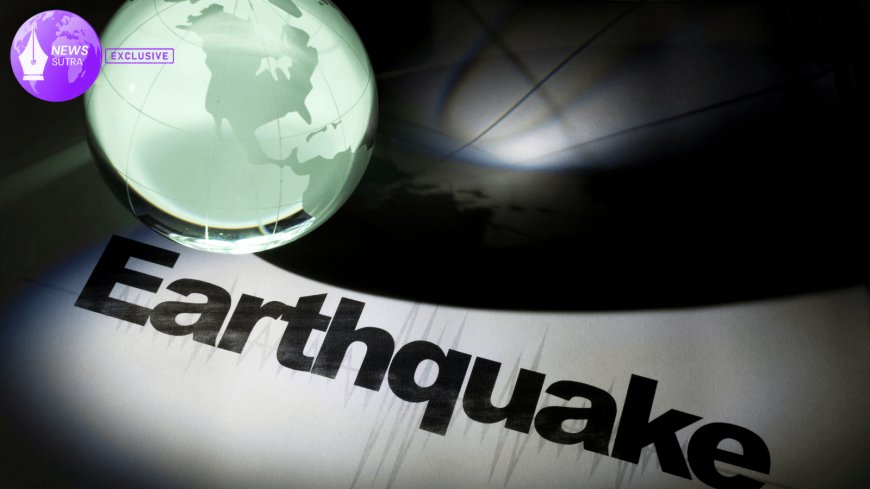From Russia’s Mega Earthquake to U.S. Shores: Lessons for West Coast Tsunami Preparedness
Insights from Russia’s mega earthquake are reshaping U.S. tsunami preparedness. Experts warn West Coast cities like Seattle must act now.

When Russia was rocked by a powerful mega earthquake earlier this year, the global spotlight briefly shifted to seismic resilience. Yet beyond immediate devastation, the tremors raised a pressing question for the United States: what if a similar event struck near the Pacific Northwest? For coastal cities like Seattle, San Francisco, and Portland, the lessons from Russia’s quake could shape how the U.S. prepares for future tsunamis and seismic hazards.
Russia’s Earthquake: A Wake-Up Call
The Russian quake, measured at 8.7 on the Richter scale, unleashed destructive ground shaking and triggered localized tsunamis. Scientists noted that while Russia’s Far East bore the brunt, the cascading effects were felt globally in terms of seismic data and ocean wave modeling.
U.S. seismologists immediately began reviewing the event, comparing it with conditions along the Cascadia Subduction Zone — a fault system capable of producing earthquakes of equal or greater magnitude. According to the U.S. Geological Survey (USGS), the probability of a magnitude 8 or larger event occurring along Cascadia within the next 50 years is about 37% (USGS Report).
Tsunami Risk: The West Coast Vulnerability
Unlike hurricanes, which allow days of warning, tsunamis from subduction quakes can strike in under 20 minutes. Modeling based on NOAA simulations suggests that if a Cascadia rupture occurred, wave heights along Oregon’s coast could exceed 30 feet.
Seattle, though sheltered by Puget Sound, faces risks of liquefaction and port infrastructure collapse. In contrast, towns like Crescent City, California — historically hit hard by tsunamis — remain acutely vulnerable due to their exposure to direct Pacific wave energy.
A comparative analysis of the Russia quake versus Cascadia reveals striking parallels: both regions share long fault lines, offshore tectonic plates, and densely populated coastal cities.
Lessons Learned: Preparedness Gaps
Russia’s quake highlighted several failings that U.S. emergency planners are now scrutinizing:
-
Warning Delays – Russian coastal communities reported that many sirens failed due to outdated systems.
Lesson: U.S. communities need redundant, solar-powered siren networks that function even if power grids collapse. -
Community Education – In Russia, many residents underestimated the risk and delayed evacuation.
Lesson: The U.S. must integrate earthquake-and-tsunami drills in schools and workplaces, particularly in coastal counties. -
Infrastructure Weaknesses – Bridges and ports collapsed in Russia due to insufficient seismic retrofitting.
Lesson: West Coast ports like Oakland and Seattle require accelerated resilience upgrades.
Expert Voices: Predictive Modeling and Urban Planning
Dr. Karen Lin, a geophysicist at Stanford University, argues that Russia’s disaster underscores the need for predictive simulations:
“We can’t stop tectonic plates from moving, but we can forecast wave impact zones. By running predictive tsunami simulations for cities like Seattle, we can guide future zoning laws, evacuation routes, and even where hospitals should be built.”
To this end, simulation data from U.S. labs is being compared against Russia’s quake-generated waves to refine local response strategies. The National Tsunami Warning Center (NTWC) is also updating its hazard maps with new Russian data inputs.
Economic and Social Impacts
The Russian quake displaced nearly half a million people. Translating those figures to U.S. soil suggests a Cascadia event could displace up to 1.2 million Americans along the West Coast.
Beyond human displacement, the economic impact could reach $80–120 billion in damages — crippling industries from shipping to fishing. A recent FEMA report warns that without adequate resilience investments, recovery could take decades.
For underserved U.S. coastal towns, particularly Indigenous fishing villages and low-income communities along Oregon’s southern coast, the stakes are even higher. Lack of resources means recovery could lag far behind metropolitan hubs like Seattle.
Path Forward: Building a Resilient Coast
Drawing from Russia’s quake, U.S. policymakers are now considering:
-
Upgrading Early Warning Systems – ensuring mobile alerts reach residents in under 60 seconds.
-
Strengthening Community Shelters – building vertical evacuation towers in flood-prone coastal zones.
-
Zoning Reform – restricting new construction in the highest-risk tsunami zones.
-
Investing in Local Economies – supporting resilience in small fishing towns, where recovery gaps are most pronounced.
Conclusion: From Crisis to Preparedness
Russia’s mega earthquake was a stark reminder that seismic hazards are not distant possibilities but imminent risks. For the U.S. West Coast, the challenge lies not only in preparing technologically but also socially — ensuring underserved communities aren’t left behind.
If there is one overarching lesson, it’s this: nature cannot be controlled, but preparedness can save lives. By applying Russia’s lessons today, the U.S. has a chance to transform vulnerability into resilience before the next megaquake strikes.











